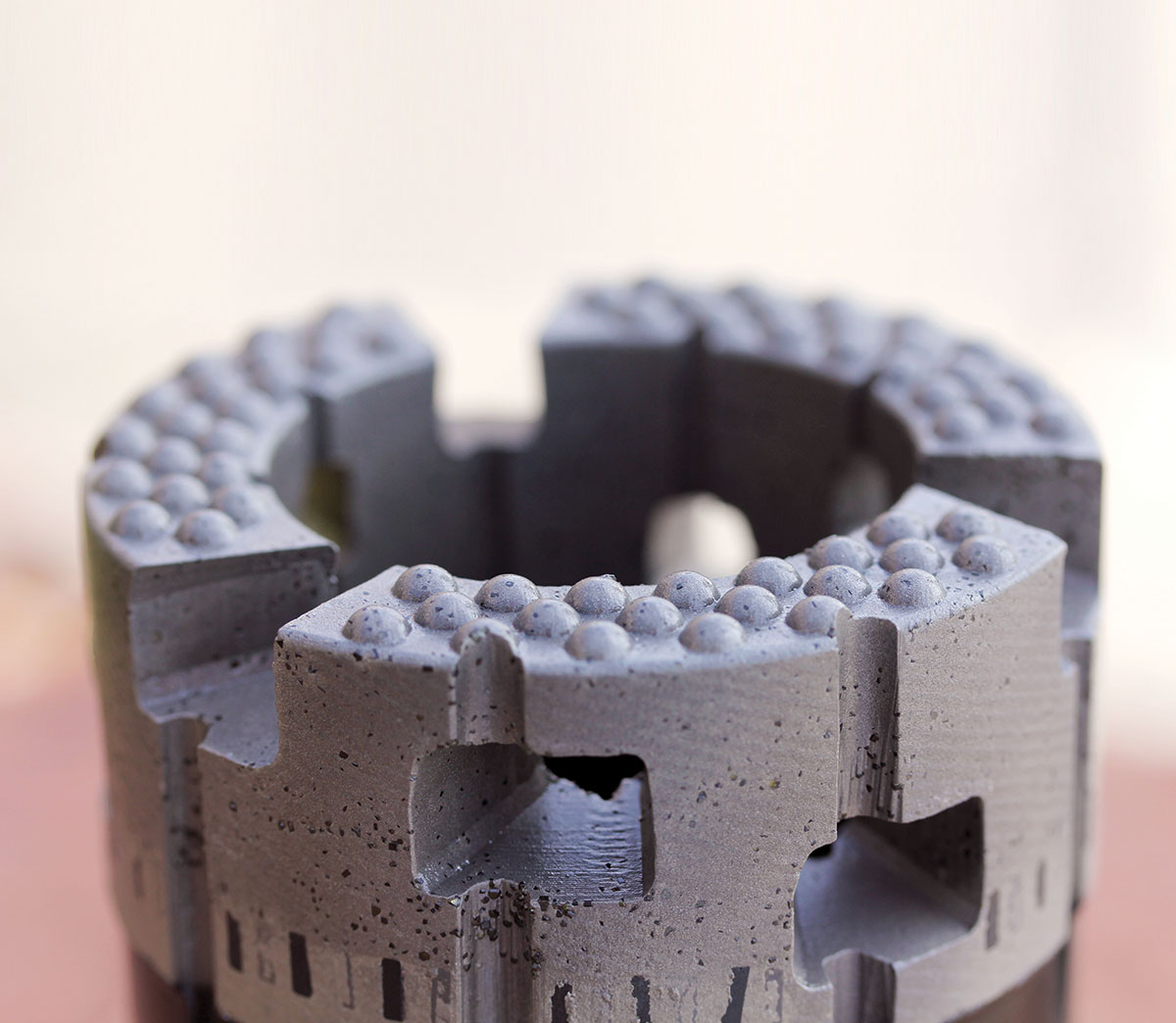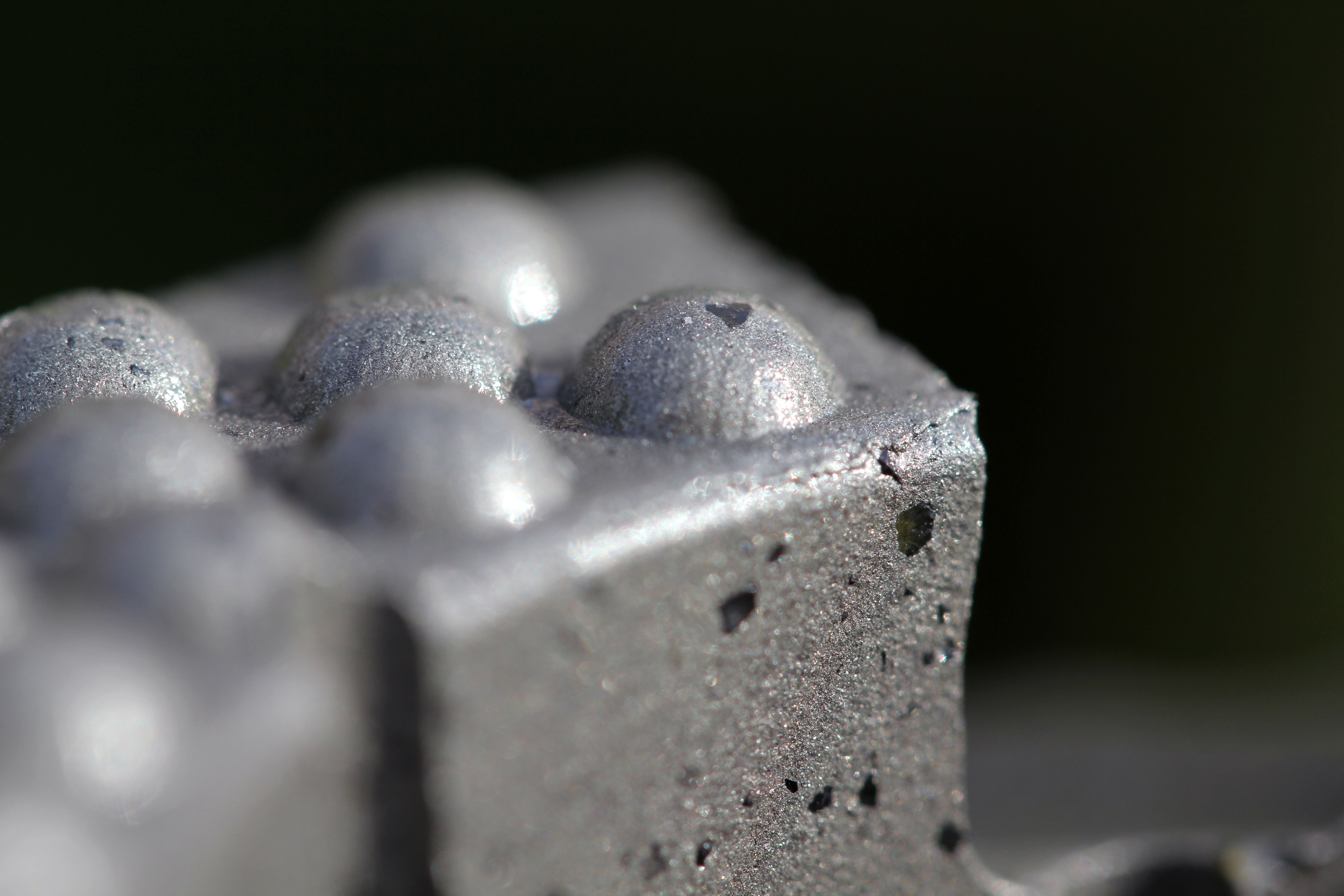EXPLORATION
février 1, 2018
The science of drilling: Are you getting the most out of your diamond bits?
There are many different factors that affect the rate at which consumables are used, but have you looked at the way drilling could be affecting your bits? The best way to save money on consumables like bits is to check your drilling methods.
These simple tips could decrease your operating costs and add more cash to your bottom line.
Rotational Speed
Rotational speed has a direct influence on the penetration rate of bits. If the speed is doubled for a given depth of a cut, the penetration rate also doubles. For this reason, rotational speed is typically set at a fixed value based on the size of the tools being used. If the rig has sufficient torque, the speed can be increased to get higher penetration rates. Conversely, if the head stalls under normal operation, then the speed should be reduced to produce more torque and maintain steady rotation. The exception to this rule is drilling in extremely broken and hard ground. Broken ground is free to move so instead of cutting, the rock is removed by a grinding action. Under these conditions (three body wear), diamond bit wear is extremely rapid and rotational speed should be cut to half RPM and weight on bit sufficient to reach 1 to 2 ipm (3 to 5 cpm).
Quick Tip
If the head stalls under normal operation, reduce the speed to produce more torque and
maintain steady rotation.
In broken ground, cut RPM in half and apply sufficient weight on bit to reach 1 to 2 ipm
(3 to 5cpm).
Weight (Force) on Bit
Weight on bit (WOB) is the main method of controlling bit life and penetration rate. If very high bit loads are required to cut the rock, select a higher series bit to prevent increased hole deviation, excessive core barrel, and rod wear, and even down-hole failures. Increasing the bit series normally results in lower bit weights required for the same penetration rates. If weight on bit is too low, both the penetration rate and torque drops, resulting in low life and productivity. This condition is referred to as polishing and describes the phenomenon of diamonds wearing faster than the matrix until the face is flat, leaving no diamonds protruding from the face. Polishing is caused by the friction and heat accumulating in the diamond as it rubs rather than cutting the rock. If weight on bit is too high, characterized by very little or no increase in penetration rate for additional weight, the result is constant sharpening and rapid wear.
Quick Tip
WOB is too low if the bit polishes and torque drops. Results in low life and penetration rate.
WOB is too high if added weight does not increase penetration rate. Results in constant sharpening and rapid wear.
Sharpening of the bit results from burying the diamond in the formation and creating contact between the matrix and formation. The friction on the matrix removes it and exposes new diamonds. Sharpening is beneficial when bit penetration has dropped due to wear on the diamonds but if left in a sharpening mode the bit is consumed very rapidly. As rods are added, force to maintain constant weight on bit will change, so weight on bit must be monitored to ensure consistent bit performance at all depths. The weight of the rods and the down force developed by the hydraulic cylinders provide the force exerted on the diamond bit. Unfortunately, drill rig controls do not display weight on bit but instead display feed cylinder pressure.
The weight on bit or force can easily be found by the following "off bottom" method:
- Suspend the rods with the hydraulic system in the lowering position.
- With the drilling motor running at a drill rotation, note the reading on the cylinder feed pressure gauge. This is approximately equal to the hydraulic pump pressure plus the weight of the rods in terms of hydraulic pressure. This is called the “off bottom” pressure.
- Rotate the rods and feed them down by opening the restrictor valve. As the bit touches bottom, part of the weight of the rods is supported on the bit. This action is indicated by a decrease in the gauge reading. The difference in the gauge readings is the pressure applied to the bit.
- The pressure applied to the bit multiplied by the area of the hydraulic cylinders gives the force or weight on bit.
- The bit torque can be measured in a similar fashion by comparing the “off bottom” hydraulic pressure of the rotation unit to the hydraulic pressure while drilling.
Torque
Torque generated by the bit is a function of sharpness of the bit and weight on bit, and results from the diamonds cutting the formation. As such, torque should be viewed as beneficial and an indication of drilling effectiveness. Minimum torque occurs just after bit sharpening has completed and as bit weight is reduced. Maximum bit torque occurs during bit sharpening due to the bit matrix coming into contact with the rock. A simultaneous decrease of torque and penetration rate indicates that the bit is polishing and needs to be sharpened. Torque increases due to sharpening should only be a concern in lost circulation or when sharpening requires water restriction. Bits with large diamonds can drop or stall RPM when sharpening. If RPM drops during sharpening then a lower gear or speed should be used to increase available torque.
Quick Tip
Decreasing torque and penetration rate indicates bit polishing.
Maximum bit torque occurs during bit sharpening. Only be concerned with torque rise when restricting water or in lost circulation.
Fluctuation in torque, particularly during sharpening is caused by unstable rock fragmentation and/or insufficient rock penetration. Weight on bit needs to be maintained to establish secondary fracturing and stable cutting.
If the head stalls under normal operation, then reduce speed to produce more torque and maintain steady rotation.
Bits with large diamonds can drop or stall RPM when sharpening. If RPM drops during sharpening, then a lower gear or speed should be used to increase available torque.
Penetration Rate
The cutting rate varies as a result of weight on bit, sharpness, bit formula, and ground conditions. Typical penetration rates vary anywhere from 2 ipm to 12 ipm depending on bit formula and formation. As formations become harder, the penetration rate should be reduced to achieve good bit life. In extremely broken, hard ground, drill at half RPM and weight on bit sufficient to reach 1 to 2 ipm (3 to 5 cpm).
Quick Tip
Penetration rates vary anywhere from 2 ipm (5 cpm) to 12 ipm (30 cpm) based on bit
and formation.
In extremely broken, hard, ground, run at half RPM and weight on bit sufficient to
reach 1 to 2 ipm.
The penetration rate to prevent polishing mode may be higher in large diamond bits.
Water Flow
The flow of drilling fluid in the drill hole serves many purposes including the essential cooling of the diamonds, removal of cuttings, and attainment of good bit life. High penetration rates require additional flow to keep cuttings off the bit face, as do higher rotation rates. There is no maximum water flow rate, though at high-flow rates, the bit can be lifted off the rock face, causing it to polish. Free-cutting bits obtain maximum life and penetration using plenty of water.
Quick Tip
High penetration and/or rotation rates require additional flow.
There is no maximum water flow rate. At high pressures, the bit can be lifted off the rock face, causing it to polish.
Free-cutting bits obtain maximum life and penetration using plenty of water.
The positive displacement pumps typically used on drill rigs pump water in proportion to how fast they are spinning; the faster they spin the more they pump. The amount of water pumped will be nearly the same over a very large pressure range and for this reason, water pressure does not tell the driller anything about how much water is flowing. For a driller to calculate water flow, they should measure the water pump shaft rpm with a tachometer, and then compare the measured shaft speed with the max speed listed on the nameplate. If the shaft speed is half of the max speed then the water pumped will be half of the listed flow at max speed. The other method is to disconnect the outlet hose and run it to a 5 gallon or 20-liter bucket and time how long it takes to fill. The flow rate is the time in seconds divided by 60 multiplied by either 5 gallons or 20 Liters.
FMC LO918 Nameplate, Max Speed: 625 rpm Output Flow: 20.2 GPM Measured rpm of 240 rpm. Output flow is equal to 240 rpm/625 rpm X 20.2 GPM = 7.5 GPM.


Sharpening
Sharpening, also known as stripping, is the act of conditioning the bit to regain or improve penetration rate. Sharpening of the bit occurs when sufficient weight is applied to create contact between the supporting matrix and the rock. The friction on the matrix removes it and exposes new diamonds. Sharpening is necessary when a new bit is started, if too low a bit has been selected for the rock type or if an impregnated bit has been allowed to slow down and polish. Active sharpening should be done as little as necessary because it reduces bit life.
Quick Tip
Add WOB until torque rises, once penetration rate increases, reduce WOB to maintain desired penetration rate.
Reduce RPM by 1/2, wait until torque and penetration rate rises. Return speed to normal operation.
If 1 and 2 are insufficient (up-holes, underpowered rigs, or too low a series bit), reduce
RPM by 1/2 and reduce water flow. Wait until torque and penetration rate rises. Return
speed and water flow to normal operation.
Large diamond bits have a greater rise in torque on initial sharpening. WOB needs to be held until penetration rate increases. Reduce WOB to maintain desired penetration rate once sharp.
If frequent sharpening is required, a higher series bit formula should be selected. Under no circumstances should any acid be used for sharpening a Boart Longyear™ impregnated bit. Also, shutting off the water flow while drilling and waiting for the bit to "bite", is not recommended by Boart Longyear as a method of sharpening due to the likelihood of burning in the bit.

DOWNLOAD PDF
Download a PDF of selecting the right bit in 5 easy steps as well as a sample testing log
and start optimizing your bit performance today.
DOWNLOAD
Media Permission: Boart Longyear grants you immediate agency to republish this article. We request that you cite Boart Longyear as the source and provide a link back where appropriate.
DISCUSSION
-
Hi there! Do you know if they make any plugins to assist with Search Engine Optimization? I’m trying to get my site to rank for some targeted keywords but I’m not seeing very good gains. If you know of any please share. Thank you! You can read similar text here: Bij nl




